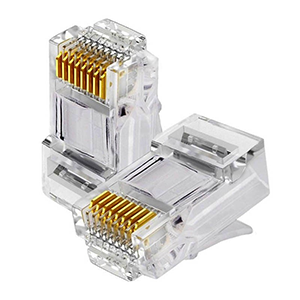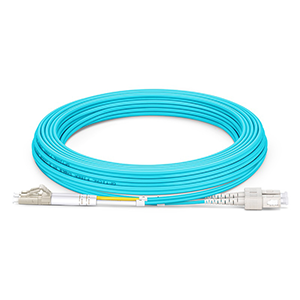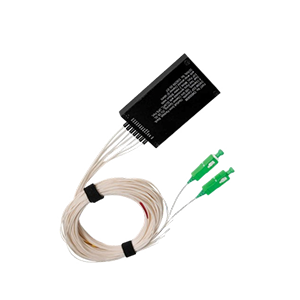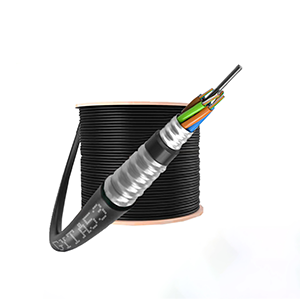In a PON (passive optical network) network, ONU (optical network unit) plays a key role. This article will explore how to choose the best ONU. We will first define the basic architecture of the PON network and explain its main advantages. Next, we will explain the core functions of the ONU in the PON network and analyze its impact on network performance.
Then, we will focus on the key factors for selecting the best ONU, including bandwidth and transmission rate, interface and connection method, power consumption and heat dissipation performance, security protection capabilities, management and monitoring, as well as cost and reliability. We will analyze the impact of these factors on ONU selection. Finally, we will propose a systematic decision-making method for selecting ONUs and explain how to make a reasonable choice based on actual needs.
PON Network Overview
Basic Architecture of PON Network:
PON (Passive Optical Network) is a passive optical network, which is a broadband access technology based on optical fiber. The basic architecture of the PON network includes the following key components:
(1) OLT (Optical Line Terminal): Deployed in the service provider’s computer room, responsible for network-side interface and business management functions.
(2) ODN (Optical Distribution Network): An optical transmission network composed of passive optical splitters, optical fibers, etc.
(3) ONU (Optical Network Unit): Deployed at the user site, realizing photoelectric conversion and user access functions.
The PON network adopts a tree topology. One OLT can support multiple ONUs, and the sharing of optical fiber resources is achieved through passive optical splitters. The transmission method between OLT and ONU is time division multiplexing (TDM) for uplink and downlink.
Main advantages of the PON network:
(1) Simple network architecture:
- The core devices of the PON network are only OLT and ONU, and the ODN network segment does not require active devices.
- The simple passive optical network architecture greatly reduces the cost of network construction and maintenance.
(2) High bandwidth utilization:
- The PON network uses a shared optical transmission medium and improves bandwidth utilization efficiency through TDM.
- A single optical fiber can serve multiple users at the same time, saving optical fiber resources.
(3) Long transmission distance:
- Due to the use of optical fiber transmission, the transmission distance of the PON network can reach more than 20km.
- The long-distance transmission feature greatly reduces the civil engineering cost of network construction.
(4) Strong service flexibility:
- The PON network supports triple-play services (voice, video, data) to meet the diverse needs of users.
- ONU has multiple user interfaces, strong adaptability, and is easy to deploy flexibly.
(5) Low energy consumption:
- The passive optical network ODN part does not require power supply, which greatly reduces the operating energy consumption cost.
- ONU integrates power management function, and its energy consumption is much lower than that of traditional access equipment.
In short, the simple architecture, efficient bandwidth utilization, long-distance transmission and low cost of PON network make it the mainstream technology of current fiber-optic access network.
The role of ONU in PON network
The core function of ONU in PON network:
ONU (Optical Network Unit) is one of the key components in PON network and undertakes the following core functions:
(1) Photoelectric conversion:
- ONU converts the optical signal from the optical fiber network into an electrical signal for use by user devices.
- At the same time, it converts the electrical signal sent by the user device into an optical signal and sends it back to the optical fiber network.
(2) Protocol conversion:
- ONU realizes the conversion between the user side protocol (such as Ethernet) and the PON network side protocol (such as GPON, EPON).
- Ensure that user devices can transparently access the PON network and enjoy high-speed broadband services.
(3) Service support:
- ONU provides users with access to a variety of broadband services such as voice, video, and data.
- ONU can provide corresponding QoS guarantees and resource allocation according to different types of services.
(4) Management function:
- ONU undertakes the management and maintenance tasks on the user side of the PON network, such as fault monitoring, performance statistics, etc.
- ONU can interact with OLT for management signaling to achieve centralized control and remote maintenance.
The impact of ONU on PON network performance:
(1) Transmission performance:
- ONU photoelectric conversion function directly affects the transmission performance and signal quality of the optical network.
- The optical transceiver technology level supported by the ONU determines the transmission rate and distance of the PON network.
(2) Service quality:
- The protocol conversion and service support capabilities of the ONU directly determine the service quality of user services.
- The performance and resource allocation strategy of the ONU will affect the performance of key services.
(3) Network management:
- The management function of the ONU is directly related to the centralized monitoring and fault diagnosis of the PON network.
- The manageability of the ONU will affect the operation and maintenance efficiency and reliability of the entire PON network.
(4) Deployment flexibility:
- The physical characteristics and interface type of the ONU determine its deployment flexibility and adaptability.
- Whether ONU can meet different scenarios and user needs is one of the key factors in network deployment.
In short, ONU plays a key role in PON network, and its various functions and performance will have a direct impact on the transmission capacity, service quality, network management and deployment flexibility of the entire PON network. Therefore, the design and selection of ONU is crucial to the overall performance of PON network.
Key factors for selecting the best ONU
The key factors for selecting the best ONU include the supported fiber type and rate, compatibility with existing equipment, and management and configuration functions. The stability and reliability of the equipment should also be considered to ensure efficient data transmission and long-term network stability.
Bandwidth and transmission rate:
- User demand determines the access bandwidth required by ONU, such as home users and enterprise users have different bandwidth requirements.
- The transmission rate of ONU directly affects the user experience, such as the difference in downstream/upstream bandwidth, GPON/EPON and other standards.
Interfaces and connection methods:
- ONU provides common user interfaces such as Ethernet, POTS, CATV, etc., which need to match user equipment.
- Connection methods such as wired/wireless can affect user convenience and network coverage.
Power consumption and heat dissipation performance:
- ONU power consumption determines the deployment scenario, such as low-power ONU for home use and high-power ONU for enterprise use.
- Good heat dissipation performance of ONU can improve equipment reliability and reduce the risk of failure.
Security protection capabilities:
- ONU security protection can prevent unauthorized access, protect user privacy and network security.
- Security features such as access control and encryption algorithms directly affect network security.
Management and monitoring:
- Centralized management and remote monitoring help improve network operation and maintenance efficiency and fault response speed.
- ONU management functions such as performance statistics and remote configuration are directly related to network manageability.
Cost and reliability:
- ONU procurement costs directly affect deployment scale and network construction investment.
- ONU reliability includes working stability, failure rate, etc., which determines the stability of the overall network.
Taking all the above factors into consideration, the most suitable ONU product can be selected according to the actual application needs to meet the goals of user experience, network performance and operation and maintenance efficiency.
The decision-making process for selecting the best ONU
The decision-making process for selecting the best ONU includes evaluating network requirements, comparing technical specifications and performance of different models, ensuring compatibility with existing equipment, and considering the support services of the supplier. The stability, reliability and future scalability of the equipment should also be considered to meet long-term network requirements.
Determine business requirements:
- First clarify the specific needs of users in terms of bandwidth, service type, access method, etc.
- Determine the priority of ONU requirements based on the characteristics of different user scenarios (such as home, enterprise, etc.).
Evaluate technical indicators:
- Evaluate the bandwidth, interface type, power consumption, security protection and other technical parameters of ONU according to the needs.
- Preliminary screening and comparison of candidate ONU models based on the degree of satisfaction of technical indicators.
Analyze operational factors:
- Consider the performance of ONU in deployment, management, maintenance and other operational links, such as reliability and manageability.
- Analyze the total cost of ownership (TCO) of ONU in combination with factors such as procurement cost and operation and maintenance expenses.
Weigh the overall benefits:
- Consider business needs, technical indicators, operational factors, etc., and weigh the pros and cons of each aspect.
- Choose an ONU model that achieves the best balance in terms of performance, cost, reliability, etc.
Develop an implementation plan:
- Develop a detailed deployment plan and operation and maintenance management strategy based on the selected ONU model.
- Ensure that the ONU can give full play to its performance advantages, meet user needs and improve network efficiency.
The above decision-making process can help network operators or users choose the most suitable ONU product according to their actual situation and needs. In the actual selection process, it is necessary to balance various factors such as business needs, technical indicators, and operating costs to make the best choice.
Summary
Choosing an ONU that suits your needs is crucial to the smooth deployment and stable operation of the PON network. Our company has long focused on the research and development and application of PON network technology and has rich practical experience. We provide various high-performance ONU products, which can be widely used in FTTH, enterprise dedicated lines and other fields.
Our ONU adopts industry-leading technology and has achieved excellent levels in bandwidth, interface, power consumption, security, management functions and other aspects. At the same time, our engineering team will provide you with professional demand analysis and product selection services to ensure that the selected ONU can meet your actual needs. Contact us now to learn more. We will do our best to provide you with the best products and solutions.
This Article FAQ
Consider factors such as compatibility with your PON type (e.g., GPON, EPON), data throughput requirements, number of ports, management features, and manufacturer reputation.
GPON (Gigabit Passive Optical Network) and EPON (Ethernet Passive Optical Network) are different PON standards. Choose an ONU that matches your network’s PON standard. GPON offers higher bandwidth and is commonly used in many networks, while EPON is more suitable for Ethernet-based networks.
Data throughput capacity is crucial as it determines how much data the ONU can handle and deliver to end users. Choose an ONU that meets or exceeds your network’s speed and bandwidth requirements.
Yes, the number of ports determines how many devices can connect to the ONU. Select an ONU with an appropriate number of ports based on the number of devices you need to connect and the expected future growth.
Management features, such as remote management capabilities, network monitoring, and configuration options, are important for network administration and troubleshooting. Choose an ONU with robust management features to simplify network maintenance.
ONU form factor refers to its physical design and size. Ensure the form factor fits your installation environment, whether it’s for wall-mounting, desktop use, or integration into existing hardware.
An ONU with integrated Wi-Fi can eliminate the need for a separate wireless router, simplifying setup and reducing equipment costs. It also provides a streamlined solution for delivering wireless connectivity.
Consider the power consumption and energy efficiency of the ONU, especially for large-scale deployments. Lower power consumption can reduce operational costs and environmental impact.
Ensure the ONU complies with industry standards and certifications, such as IEEE or ITU-T. Compliance ensures compatibility with other network equipment and adherence to performance and safety standards.
Reliable vendor support and a comprehensive warranty are important for addressing potential issues and ensuring long-term network reliability. Choose an ONU from a reputable manufacturer that offers good customer support and warranty options.





